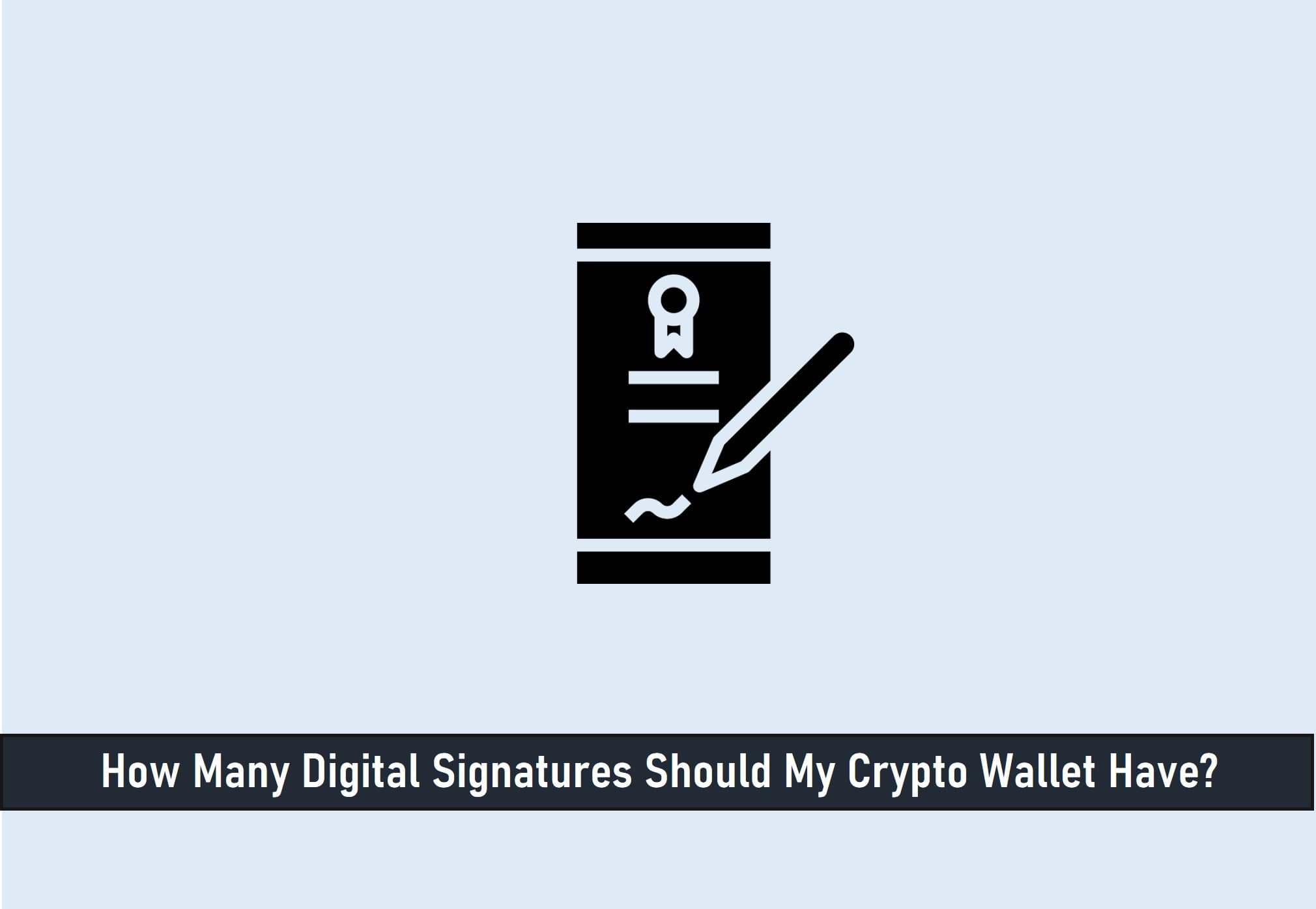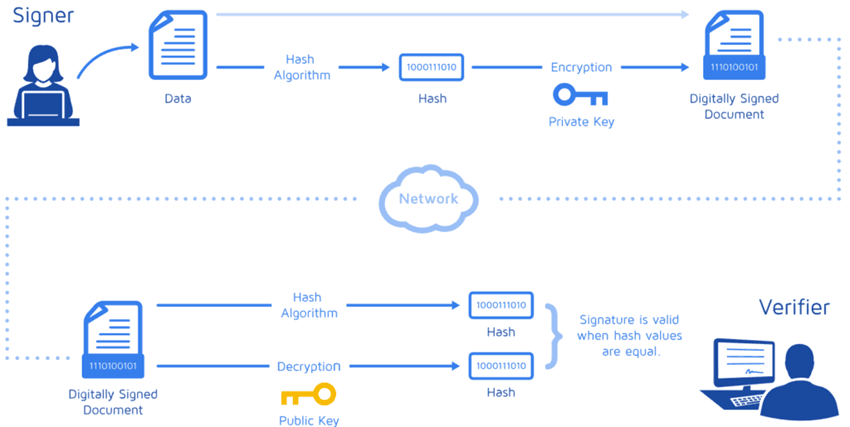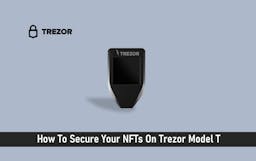
How Many Digital Signatures Should My Crypto Wallet Have?
To answer the question straight up…a crypto wallet has only one digital signature for each transaction and nothing more.
A digital signature just like the name implies is a digital validation by the owner of that crypto wallet that he is willing to transfer funds from his crypto wallet to a recipient’s crypto wallet.

Key Takeaways
• A digital signature is a unique piece of code that is found in every crypto wallet responsible for making crypto transactions.
• You cannot compromise a digital signature hoping that it would carry out the same transaction it was intended for as every letter and number on that code represents a piece of information.
• There are various crypto signature algorithms used by various cryptocurrencies which imply that not all digital signatures are from the same source.
• The digital signature together with your public and private keys are important components that are responsible for the activities performed by your crypto wallet.
SEE ALSO: Differences Between Public Keys And Private Keys In Cryptocurrency
SEE ALSO: How Do I Recover My Lost Bitcoin Private Key?
SEE ALSO: How to Safely Backup Your Private Key Information on XSEED
The digital signature comes in as a mark of approval just as you would sign on a cheque to prove to the bank that you are ordering them to give a certain sum of money to the holder of that cheque.
This signature is a piece of code such as bc24538defght993t59 for example that is unique to each crypto wallet such that when it is tampered with or altered in any way, it loses its uniqueness, and in that process, the wallet cannot successfully carry out a crypto transaction.
A digital signature algorithm usually has three important components which are:
- Key generation
- Signing algorithm and
- Signature verification algorithm
Key Generation
This part refers to the generation of your public and private keys which together play an important role in the workings of your crypto wallet.
The private key is a set of alphanumeric characters that provide you immediate access to crypto assets which should be held confidential while the public key is connected to your crypto wallet address and is that part that can be accessed by the public when making crypto transactions.
Signing Algorithm
The purpose of the signing algorithm is to encrypt all relevant information alongside your private keys.
Signature Verification Algorithm
This algorithm generally verifies the authenticity of the transaction data, public key, and digital signature.
The receiver of the transaction data generally runs it through a hashing algorithm that was used by the sender to verify the integrity of the transaction data after confirming its authenticity.
Types of Cryptographic Signature Algorithms
There are various types of signature algorithms used by different crypto wallets as not all signature algorithms are the same.
Let us take a look at some of them below:
1. RSA Signatures
The name RSA was derived from the names of Ron Rivest, Adi Shamir, and Leonard Adleman, a group of scientists who first described it in 1978.
This RSA signature solves the validity problem that senders are required to prove by requiring them to create digital signatures when sending encrypted transaction data.
The creation of this digital signature gives the recipient the ability to easily decipher the authenticity of the transaction data as well as its integrity as well.
This is why as earlier mentioned, any compromise in the digital signature will result in an entirely different thing altogether which will cause the transaction not to hold.
2. Lamport Signatures
The Lamport signature is a one-way signature in the sense that the same signature can only be used once when sending a transaction data and it can be built from a cryptographic secure one-way function.
Even though a Lamport key or signature can only be for signing one transaction data, when combined with hash trees, they can be used to sign multiple transaction data.
This particular type of signature was invented by Leslie Lamport in 1979.
3. Ring Signatures
A major cryptocurrency that makes use of the ring signature in its privacy feature for its users is the Monero coin.
This signature is usually conducted by a group of users who hold keys where one user signs the transaction data and the information about the user that signed it becomes impossible to find out.
By information here, I mean the amount of XMR being sent as well as the funds of the user that signed the transaction.
Monero and other similar cryptocurrencies make use of this feature by mixing the public key of the sender making the transaction with other public keys and forming a group in the process.
This feature on Monero is called Ring CT technology.
Final Thoughts
Digital signatures are an important part of every crypto wallet in the crypto market. Each signature is unique which means when compromised, it ceases to carry out the transaction it was intended to do.
Together with your private and public keys, you can make crypto transactions seamlessly. Your private keys, on the other hand, must be safely kept so that they can be recovered when forgotten and to avoid misplacement.
Read More




